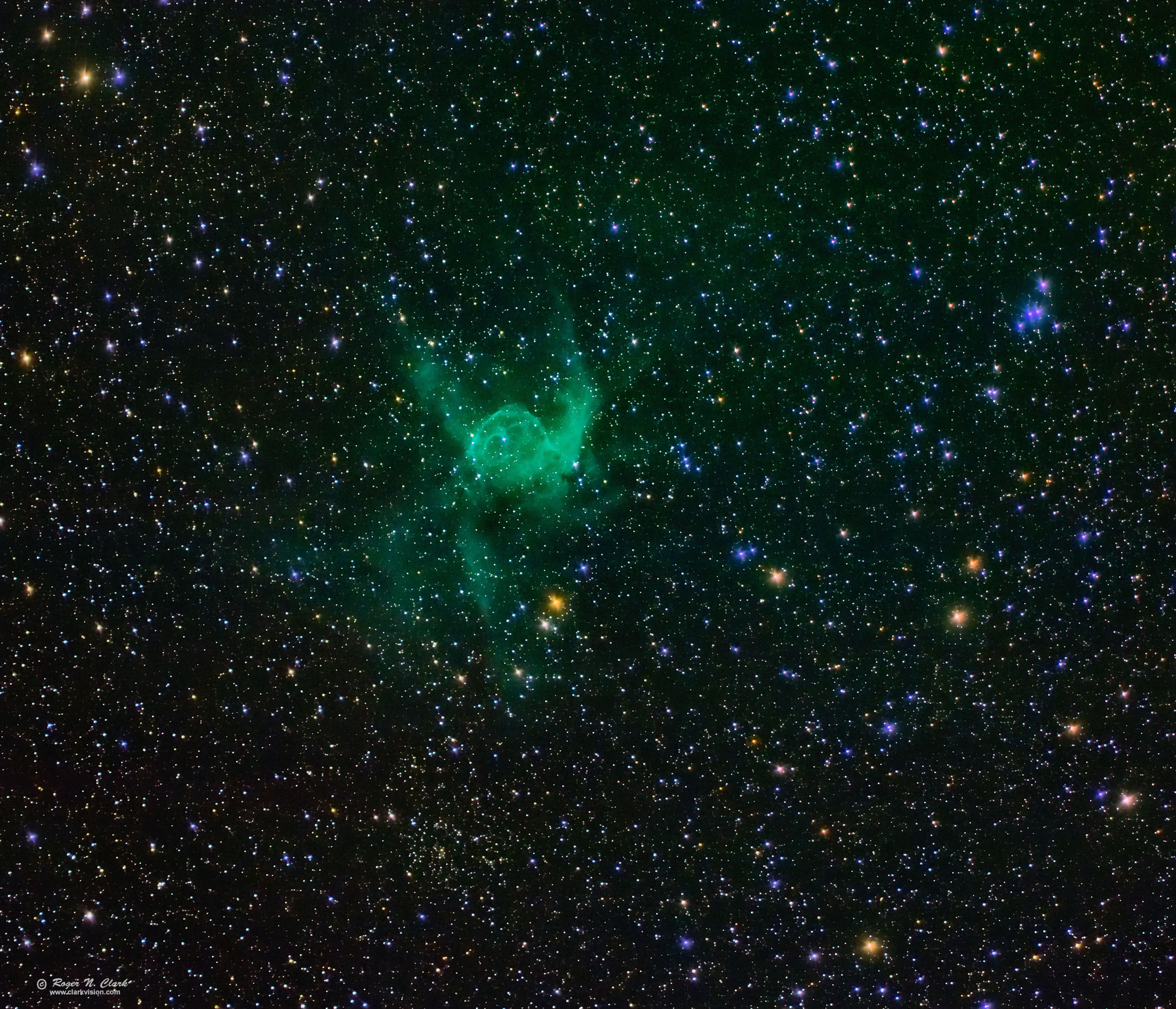| Home | Galleries | Articles | Reviews | Best Gear | New | About | Contact | Gallery Index | Previous |
Next |

| Home | Galleries | Articles | Reviews | Best Gear | New | About | Contact | Gallery Index | Previous |
Next |

Thor's Helmet is an emission nebula about 12,000 light years away. The green color is due to oxygen emission. Because we see no red or pink in this natural color image, there is relatively little hydrogen emission. Narrowband hydrogen alpha imaging indicates some hydrogen emission, but not as much relative to oxygen as seen in many emission nebula. Note the intricate filamentary structure.
Technical. EOS R7 Mirrorless Camera, Canon 300 mm f/2.8 L IS II lens. plus Canon Extender EF 2X III (teleconverter) 600 mm at f/5.6. Total exposure time was 91.5 minutes with 183 30-seconds exposures, ISO 6400. No filters were used. Normally, I would not use such a high ISO, but wind was high (20 mph), so I had to keep exposure times short. But the R7 suffers from some banding, and I raised ISO to minimize that problem. Even so, banding showed in the in stacked image, which had multiple dithers to try to reduce the problem. Post processing had to mitigate this problem.
The exposures were tracked on an iOptron HAE29EC strain-wave mount with high resolution encoders and no guiding. Initially, I tried autoguiding, but wind gusts proved a problem, as the autoguider tried to compensate but the mount is so rigid, it had already corrected itself, causing the autoguider to do an overcorrection. Turning off autoguiding provided better tracking. See Tracking Mounts for Deep-Sky Astrophotography for the characteristics of the HAE29EC and why it may track better without autoguiding.
Post processing: raw conversion with rawtherapee, stacking with Deep Sky Stacker, stretch with rnc-color-stretch, star reduction with ImagesPlus and touch-ups with photoshop.
Original plate scale is 1.1 arc-seconds/pixel and this image is shown at 1.83 arc-second/pixel.
This is a natural color image made in Bortle 2 skies.
The Exposure Factors, CEF, CEFA are measures of the relative amounts of light received from a subject. It can be used to fairly compare wildly different lens/telescope apertures and exposure times. For this image on the sky:
No dark frames, no bias frames, no flat fields were measured for this image. Modern digital cameras like the Canon R7 include on sensor dark current suppression technology and low fixed pattern noise at ISOs around 800 and higher, making no need for dark frame subtraction. Modern raw converters correct for light fall-off and also correct for hot/dead/stuck pixels. This makes processing low light images easy: simply align and average. The R7 does have some pattern noise, and subtracting dark frames is not completely effective because some of the banding changes from frame to frame. But more testing is needed to better characterize these problems.
Keywords to this image = astrophoto-1 nebula low-light digital_astro canon_r7 rnc-color-stretch
Image ID: thors-helmet-600mm-r7-rnclark.c01.14.2024-rthc-av183-h-c2-2023sw.jpg
| Home | Galleries | Articles | Reviews | Best Gear | Science | New | About | Contact |
Last updated December 20, 2025